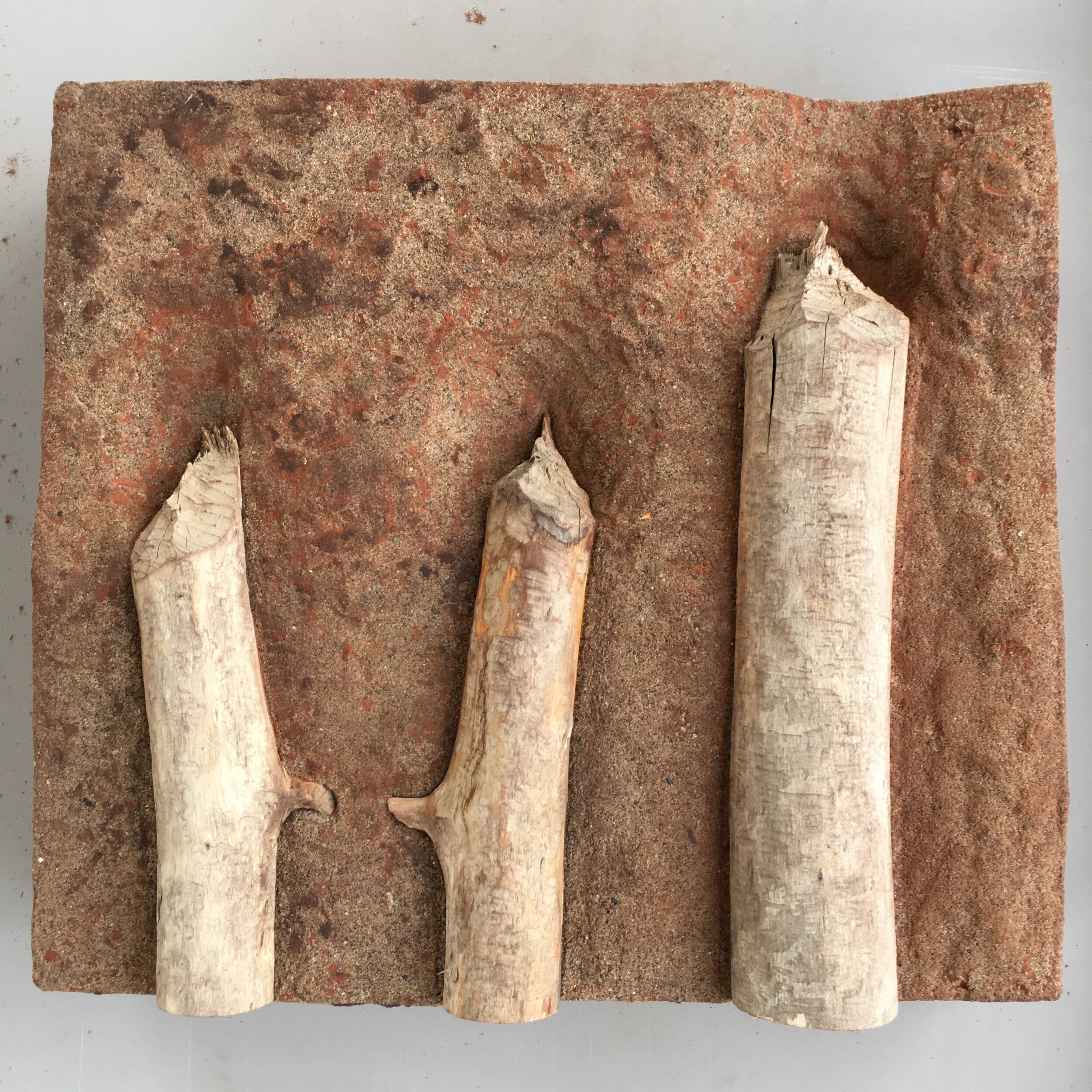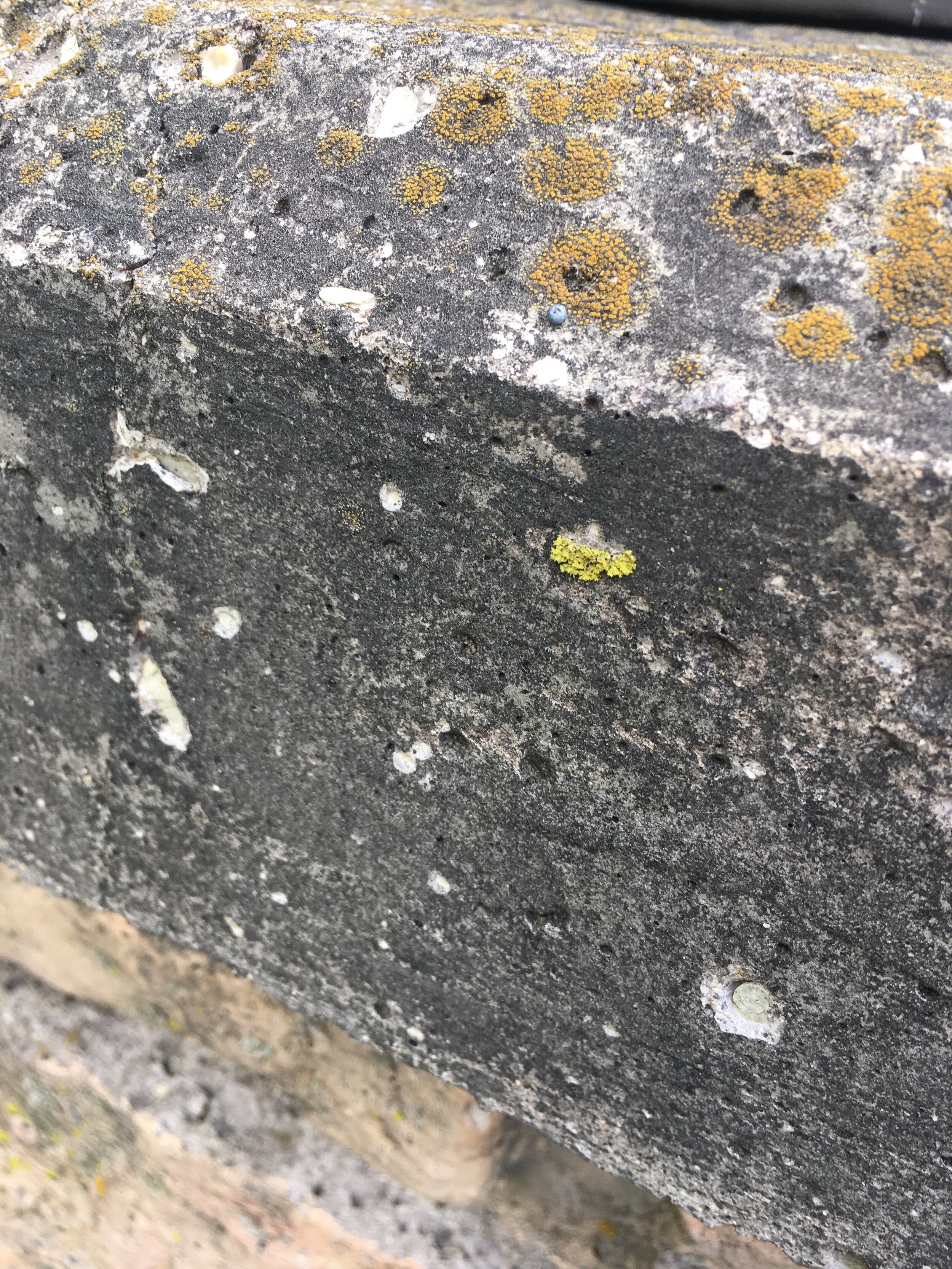Resident Artist Research Project - Bell Museum
3. Everything We Touch - Faux Stone Cairn Project
Everything we touch we turn to concrete.
Cairns are constructed collectively, sometimes over vast periods of time. One person lays a stone, eventually you have a pile. There is something sacred about this ritual that extends beyond our differences. Stone cairns have been used to mark funereal sites, monuments, and navigation routes. I first encountered them marking a trail above the treeline in Hew Hamshire’s white mountains in 2006.
Another surprise in the white mountains was a parking lot atop the highest peak. After hiking a few days towards the Mt. Washington summit I found carloads of people, bathrooms, concessions, and a post office. Following stone cairns to a summit parking lot at 7,000ft, the cairns felt less sacred, and more like concrete.
Glacial granite found stones (center), Concrete Stones (right/left)
Everywhere we go, we bring concrete. We drive up to vistas with the best views, we dam rivers to feed desert croplands, we build pipelines through sacred rivers. We even bring concrete Into our domestic spaces to mimic nature. We enjoy faux stone pavers and woodgrain floor tile, we like the idea of nature when it makes us more comfortable. Nature as a surface.
Silicon molds and rock castings
For this project, I decided to use the cairn form to consider this transition from sacred to profane. I made molds of two granite stones found near home then cast 45 fake rocks in concrete. I cast one stone in iron, along with some other objects, at a casting workshop in Tucumcari, NM.
In 2018, I was carrying Robin Wall Kimmer’s book Braiding the Sweetgrass while hiking the Chilkoot trail in Eastern Alaska and Canada. I was surrounded by mosses, lichen and the rusting detritus of the Klondike Gold Rush while reading about the symbiotic relationships between algae and fungi, and the remarkable ability for lichen to break down granite and steel. After two weeks exploring this environment, I saw all the gold rush rust not as artifact, but as trash left in the woods. I came to the conclusion that the forest would not recover until it had fully swallowed the gold rush remains. Remarkably, lichen had colonized the old iron stoves, sawblades, and food tins, and mosses were swallowing the 120 year old tree stumps left in the wake of the miners.
The last element of the cairn project celebrates this slow and steady work of nature on the built environment. I collected specimens from my immediate surroundings. From my own yard to an abandoned Kentucky Fried Chicken parklot, I found lichen and mosses on tree branches, rocks, steel railings, asphalt shingles, aluminum gutters, and lots of concrete.
Rock along superior hiking trail, August 2019
I blended specimens into slurries of yogurt and milk and then painted them onto the faux stones. After a few weeks of nurturing, there is new growth, possibly some bacteria as well as some lichen and or moss. The following images share some gathering sites and the application process.
With the generous help of the Bell’s Jennifer Stampe, I installed the sculpture on the Bell museum grounds on July 2nd 2020. This sculpture will be a component of the Bell’s “Learning Landscape”. The iron stone will rust and stain the concrete, and hopefully, the lichen and mosses will start their slow work on these fabricated surfaces.
Thanks:
THANK YOU to Daniel Stanton at the U of M’s College of Biological Sciences for his generous input on byrophytes and lichen.
THANK YOU to Yousif Dell Valle for all the casting help.
THANK YOU to Jennifer Stampe at the Bell for all her work on support for this project.
THANK YOU to the Bell Museum and the McKnight Foundation for making this work possible.
Reads:
Robin Wall Kimmerer’s Braiding the Sweetgrass
Robin Wall Kimmerer’s Gathering Moss
Chilkoot Trail Blogpost: http://joshkwinkler.com/blog/2018/7/31/the-chilkoot-trail-artist-residenccy
































